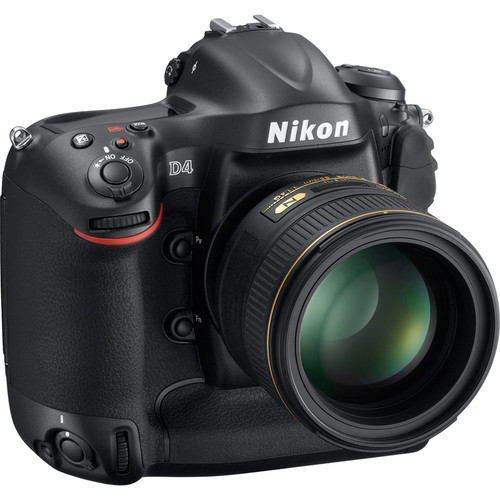
Nikon D4 Courtesy of LensRentals.com (discount)
Purchase from Adorama or B&H
Introduction
This article is a high level overview of my first impressions with the new Nikon D4. I’m a Canon shooter who has owned the 1D Mark III and currently own the 1D Mark IV, so I’m used to pro bodies. I also have hands on experience with the Nikon D3, D3s, D700 and D800 (as well as other Nikon bodies).
To be clear I like Nikon, Fuji, and Canon cameras. It is my best interest to say nothing good about Nikon so you’ll buy one using links found in this article. However, my blog has always been about providing my honest opinion based on real world use so that’s what I provide here. I also will compare it to what I’m used to which is the Canon platform, so if you are a seasoned Nikon shooter those comments are probably irrelevant to you. If you are a Canon shooter considering a platform switch, then I think you should pay close attention to them.
First Impressions
The build quality of the D4 is what you expect from a pro body, so it won’t disappoint. There’s also all the greatest features and do dads that are sure to keep you busy for months as you get used to mastering them all. However, the default settings are very good and honestly the AF system out of the box is much easier and foolproof than the Canon 1D Mark IV. I find that I can dial in the 1D Mark IV with greater accuracy (learn how), but the D4 is certainly more forgiving (like the 5D Mark III).
I think the Nikon faithful are going to love this camera, but I don’t think it’s the huge leap of improvements that we saw when the D3 arrived. I think the D3s is probably one of the best Nikon bodies ever made, so I think upgrading from that body only makes sense for those who want to stay current.
The burst mode is fantastic and 49 frames with full uncompressed raw and JPEG Fine was easily reproducible over and over again. It seems that Nikon is artificially limiting the upper boundary since it’s so predictable, but 49 at 10+ fps is probably enough for most people’s needs.
I wasn’t able to test the new XQD memory cards, but personally I’m satisfied with the CF performance. In fact I was bummed that there was no built-in SD card for use with my Eye-Fi. This left the D4 with only one usable slot for me which was a real bummer. XQD feels like a beta max or memory stick ploy all over again, so I’m disappointed that Nikon chose this route. CF is certainly more economical and is plenty fast.
My only gripe is about the price, but it’s roughly $1k cheaper than Canon’s upcoming 1D X. When I added up the cost of my gear and some of the new stuff coming out, it was obvious that Nikon is the more affordable platform these days.
I loved the new programmable buttons and options! I have always loved how Nikon makes so many features available on the camera, so from this standpoint this camera is a joy to use. The rear display also didn’t strike me as extraordinary but it worked reasonably well.
I did hate that the sub selector wasn’t redundant by default with the multi selector as I frequently hit the sub selector by accident. The result was typically annoying as I’d lose my preview or something equally frustrating.
Overall though my impression was favorable and I liked the D4.
Compared to the Nikon D800
As one might expect given the feature (and price) differential, I had a preference for the D4. I’m used to pro bodies with lots of flexibility in the custom settings, and the D4 doesn’t disappoint here. I also appreciated the fewer megapixels which made hand holding telephoto shots much more forgiving and therefore offering more sharp and in-focus images.
Overall, if I were spending my money I’d go for the D4 over the D800 for numerous reasons. Sure there’s more megapixels in the D800, but the D4 images are big enough for practical use. The D4 has a noise advantage (although subjectively it feels noisier than the D3s I used a while back).
The Bookshelf Test
If you’ve followed my blog for a while, then you know that I like to take shots of a bookshelf to compare cameras. The reason for this is simple – I can see how the camera performs in the deep shadows as well as the hot reflective surfaces – all under long exposures (no flash used). I always use Mirror Lockup and Manual mode with the focus set once and locked in Manual mode. VR is off and the camera is in a tripod with no movement in the room during the entire exposure.
One interesting thing that I noticed between these two cameras – even when using the same lens (Nikkor 70-200mm f/2.8G ED VR II) – is that the D4 was about a half stop brighter. I noticed this when shooting the exact same subject (the bookshelf) using the same identical metering modes (Active Matrix) in identical light. Here’ an example at ISO 100 where 25sec was needed to get the shot on the D4 versus 15 seconds on the D800.
You MUST view these images at 100% for a fair comparison. Thumbnails are included here merely for reference.

Nikon D4, ISO 100, 25sec at f/8 100mm, Auto White Balance – In-Camera JPG
This is the setting the D4 indicated a correct exposure
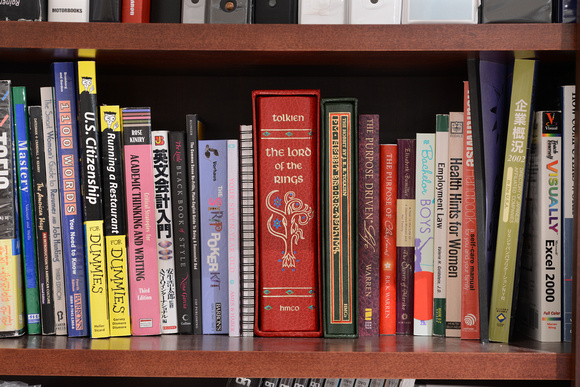
Nikon D800, ISO 100, 15sec at f/8 100mm, Auto White Balance – In-Camera JPG
This is the setting the D800 indicated a correct exposure
Note due to the greater pixel density of the D800, this image has more artifacts at this size

Nikon D4, ISO 100, 15sec (-1EV) at f/8 100mm, Auto White Balance – In-Camera JPG
The D4 indicated a one stop (-1) underexposure, but it’s a match of the D800 setting
Where you really notice the difference is on the pink book where it says “academic” and the top of the red book.
Here’s some ISO 6400 swatches from in-camera JPEG’s at 100% for comparison:
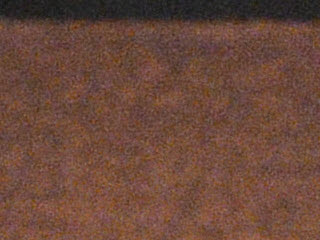 D800 | 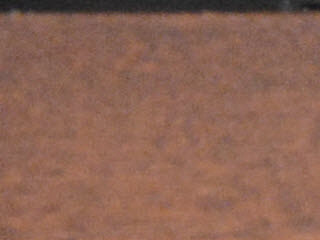 D4 0EV |
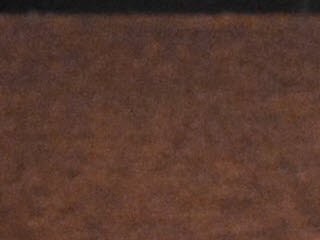 D4 -1EV | 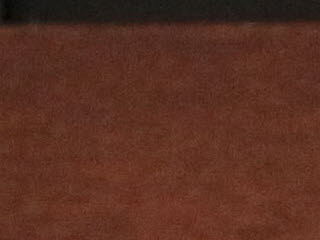 5D Mark III |
To my eyes it looks like the D4 does the best job of retaining detail when under exposed by one stop, and the D800 has the most noise but the most noticeable wood grain detail.
To see more bookshelf images from each of the cameras use the links below:
- D4 images, visit http://ronmart.zenfolio.com/d4
- D800 images, visit http://ronmart.zenfolio.com/d800
- 5D Mark III images, visit http://ronmart.zenfolio.com/5dm3vsd800
The Live View Bug
While there was more static than I’d like (and a lot more than Canon cameras), the Live View bug found in the D800 isn’t as pronounced. You still need to back off two zoom stops off the max in low light to get the most usable result, but the noise wasn’t nearly as debilitating.
Compared to the Canon 5D Mark III in the Studio
By the time I did this review I no longer had access to the Nikon 800, so I couldn’t take the same portraits. However, the sensor of the 5D Mark III is allegedly very similar to the upcoming Canon 1D X so I did the next best thing. Besides, the 5D Mark III is my personal favorite DSLR on the market right now so I thought it would be fun to compare the two.
I should also note that I didn’t bother testing my 1D Mark IV against the D4 simply because it’s a model that is soon to be retired and a previous generation camera. I will draw some more comparisons between the two in a future article.
Testing Methodology
The way I compared these cameras was to use the default settings (with RAW+JPEG Fine added and in M mode) in identical lighting conditions. The Canon 70-200mm lens is brighter and has greater reach due (compared the rear focus design of the Nikkor) so I had to adjust the camera position and settings to accommodate for these differences.
I did have a major fail in that I thought I had the no smile shot of the model in the first take so I shot several more where she was smiling. When I did the comparison at my desk, the best D4 shot was of a non-smile so I ended up with a subject variation. We are pixel peeping here though, so I don’t think it’s going to make a huge difference. What does make a difference is that the Canon does more in-camera sharpening than the Nikon.
I don’t have place to host the raw images and I wanted to exclude software errors so I’m using in-camera JPEG’s from both platforms.
The studio was set up like this for this test shot:

Room Configuration
Model - Alessandra Mariella
The Images
Here’s an image taken with the Nikon D4 using the configuration shown above:

Nikon D4, Unedited In-Camera JPEG
1/40 sec at f/9, 200mm ISO 100, Auto White Balance
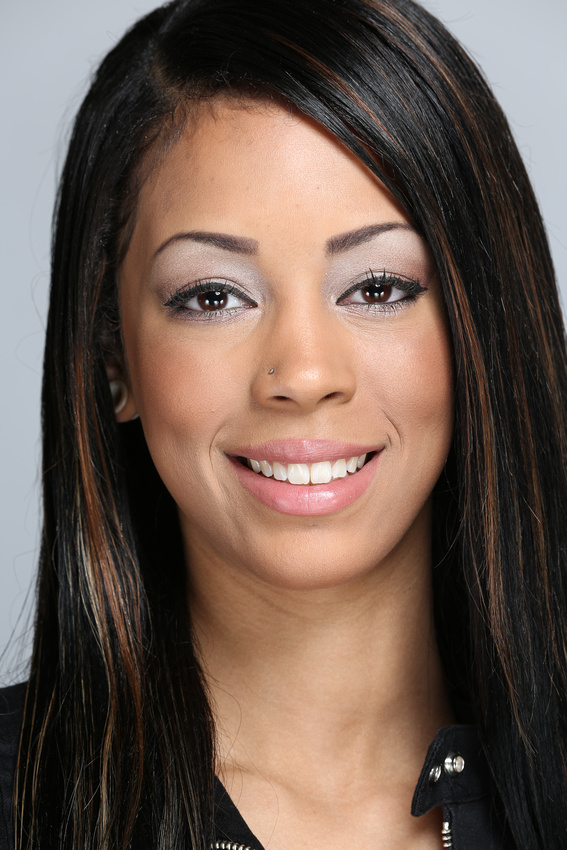
Canon 5D Mark III, Unedited In-Camera JPEG
1/60 sec at f/10, 200mm ISO 100, Auto White Balance
The Canon 5D Mark III over sharpens so it appears to have an edge, but when you look carefully at the two RAW’s I’d call them about the same. The D4 does seem to offer a little bit better detail at higher ISO’s, but it’s not the blow away leader that the D3 & D3s were when they were introduced. I think in the perfect lighting of the studio either camera will be sure to please.
I’d avoid shooting JPEG with the D4 as it seems to really benefit from RAW processing. I always urge people to shoot RAW on Canon, but if you shoot RAW+JPEG on Canon (when burst mode is not required) then you’ll find that the JPEG is usually usable most of the time. This is one place where I think the Nikon may be more of a time drain for event and wedding photographers. However, if you have your Nikon workflow down with your favorite actions then this is probably not an issue.
A word about AF accuracy

Despite nailing the AF point, the shot was a miss
due to presumably a minimum focus distance issue
I’ve always said that if you photograph kids then you are a sports photographer, and my son gave the D4 a workout. I’ll talk more about that in a future article but note that about 40%+ of the images I took of my son were out of focus. As a former Canon 1D-Mark III owner, I felt like I was using that camera as I definitely get a higher percentage of in-focus shots with my 1D Mark IV and 5D Mark III. Some issues like the one above might be attributed to the horrible minimum focus distance of the Nikkor 70-200 lens, but I do think that some blame rest on the camera itself. However, I understand that this is a complex AF system just as those found in the Canon pro bodies, so it’s always possible that I didn’t have the perfect AF settings dialed in. I was shooting single AF point (and hitting my target) in AF-C when the subject was traveling and AF-S when the subject was stationary. In this case the subject was stationary and moving very slowly.
Unedited Real World Shots
The following are all shots uploaded from the in-camera JPEG’s with zero modifications. This is exactly how they came out of the camera with no cropping or edits. I don’t have a storage server for RAW’s but if there is a single image that you really want to see a RAW file then contact me and I can try to make it available to you via Dropbox.
For a full gallery of images click here.
Please note that I despise when photographers are showing nothing but a bunch of shots of their kids. I apologize for doing that here, but I got the D4 unexpectedly. I ended up having to review it during the course of normal family activities (often in non-ideal light) so this is the result. They are as real-world as it gets.

Spot focus is not as accurate as the 5D Mark III, but better than the 1D Mark IV

Detail is good here at ISO 12,800

Great detail, but had to spot focus on the boat to get a correct exposure
Canon cameras would handle this best with Evaluate metering (similar to Active Matrix)

Dynamic range seemed pretty good, but I despise the white balance modes on Nikon’s

Evening flowers under tungsten (tungsten WB) at ISO 2000 (1/50 sec hand held)

ISO 12,800 under tungsten (f/13 for 1/50 sec handheld)

I never found a white balance mode outdoors that made me happy.
Auto white balance felt too yellow/orange

I settled on the too green and cold tone of Direct Sunlight (which I preferred to Shade & Cloudy)

I struggled with the D4 metering mode accuracy, but found spot to be my safest bet.

For this running series I got one of 10 shots in focus

This was handheld and with perfect light it does fine as a studio camera
Model - Alessandra Mariella
For Canon users who are considering switching platforms
As a camera body, you’ll enjoy the grip feel and all of the hard buttons. This is something that makes Nikons a joy to use. Many other things are about the same – just different so you’ll get used to it.
From a focusing standpoint I found the single point focusing to be similar to the 1D Mark IV’s single point focusing, but not as laser tight as the 5D Mark III and 1D X.
I’ll be blunt and say that I despise the Nikon metering system. It sounds amazing on paper, but in the real world it’s a total fail. Often times spot metering is required to get the desired result because center weighted is mostly useless (even with tweaking the size) and Active Matrix seems to enjoy silhouettes. On my Canon cameras I just set it to evaluate and maybe once a year I will hit a scenario where it fails so I’ll use spot or I’ll just use AE lock. On the D4 metering was a constant hassle – much more so than the D7000 and D800, so I often cursed it for missing the shot.
I have an equal disdain for the white balance modes of the Nikon which I admit are more accurate, but lack the warmth I enjoy from Canon. This is easily fixed in post-processing for RAW shooters, but I only use the RAW file as a emergency backup tool on the Canon platform because I like the in-camera JPEG’s so much. As a result, I found myself thinking traveling several years back in time where the in-camera JPEG was useless so being RAW only was required. This is something that’s just a difference from the platforms and Nikon would be nuts to change it, so this is where my comfort with the Canon platform shows.
As I mentioned in the D800 review, I’m also no fan of the rear focusing Nikkor 70-200mm f/2.8G ED VR II. However, I found it much more forgiving than the D800 thanks to fewer megapixels. On the D800 with that much resolution the slightest movement causes motion blur but on the D4 in Normal or Active VR modes I had great success with hand holding the lens at low shutter speeds. It’s a darker lens with less reach than Canon’s new 70-200mm f/2.8L IS II USM, so platform jumpers will be terminally ill when they experience the difference. It’s still a good lens though, so again this is just a platform difference.
In real-world use this isn’t the miracle camera that is going to blow you away. It’s a good camera, but everything I’ve seen from the new 5D Mark III (which shares a lot of technology with the 1D X) indicates that the Canon faithful will be rewarded for the their loyalty. With many great new lenses and cameras that allow you to focus more on composition, I think the reign of Nikon superiority for the last two generations has eroded. I thought of switching camps, but now I’m glad I didn’t.
If you liked this article…
You may also enjoy these articles as well:
- COMPARISION: Nikon D800 vs Canon 5D Mark III
- First Look: Nikon D800–Should Canon 5D-Mark III Users Switch?
- Parents Rejoice – No More Dark, Blurry and Out of Focus Pictures! (Canon 5D Mark III Real World Shots)
- Canon 5D Mark III Real World Shots–In-Camera HDR, High ISO, Flowers, Nature, People & Cars
- Canon 5D Mark III First Thoughts–WOW, Canon is BACK!!!! (REAL WORLD SHOTS)
- HANDS ON: Canon EOS-1D X (sample images and video)
More D4 articles coming soon!
Where to Buy or Rent
Click here to go to LensRentals.com (discount) to rent a Nikon D4 to help you decide if it’s the right camera for you. While you are at it you can pick up the same lens I used for this test here. Don’t forget that I have a discount for you as well.
You can also pick up the Nikon D4 from Adorama or B&H.
You can also pick up the Nikkor 70-200mm f/2.8G ED VR II from Adorama or B&H.
Conclusion
I’ll add more after I’ve had more time to digest the nearly 4000 images I took with this camera, but for now I’m confident enough to say that this is a great camera for Nikon shooters. If you have a D3s then I’d call it an optional upgrade only if you have the bucks. If you have a D3 or D700, then I think it’s an upgrade you’ll really enjoy.
I’d also put this camera down as a better practical studio and every day use camera than the D800. Unless you need the megapixels this or even the D300s is going to serve you better than the D800 I think.
Don’t take my word for it though, click here to rent one and see of yourself using our exclusive discount.
Disclosure
If you make a purchase using links found in this article, I may make a commission. LensRentals.com provided the loaner Nikon D4 and 70-200 lens for this review.









2 comments:
Dear Ron,
Thanks for reviewing the D4. I am torn in-between the D3s and the D4 and the only reason I have still not bought either one is because I can't make up my mind.
I was very happy when I saw the D4 had way more metering points than the D3(s) or any body before. However, you "struggled" with the metering and more so with white balance... I have read similar things about the D4 elsewhere online.
The only shooting I see myself doing with a "35mm DSLR" is sports, personal projects, macros, wedding, events & gigs (yes also events in nightclubs).
There are certainly some nice things going with the D4 :
1. illuminated buttons
2. 16 megapixels as opposed to 12
3. menu button also in V-grip
The D3s on the other hand is a much more tried and tested beast and quite frankly, 12MP - I don't know how large I can print from it?
Please advise...
Regards,
Ali Zaidi
P.S. I spent a whole night reading your blog... just AMAZING !! Thank you for such in-depth and passionate reviews and education.
Hi Ali,
Thanks for stopping by and your kind words.
There's no easy answer. While I do think the D3s is the superior camera overall, if you were to buy one today it would be fairly used. You then need to make sure you get a good copy that doesn't have issues with oil getting slung on the sensor.
If you can find a good copy (and there are plenty out there by people who collect expensive gear but rarely utilize it), then I think you'll be very happy with the D3s. Odds are you aren't coming from a D series, so you'd be quite happy with the D4 too. Both are excellent products.
If you have a good lens collection already (i.e., you own at least the 24-70 2.8 and 70-200 f/2.8 VR II) then the D4 gives you peace of mind because it has a factory warranty. If you don't have even those lenses, then I'd say put your money into the lenses and get a D3s - a good copy will not dissapoint you.
At 4256 x 2832 pixels, the D3s will give you about a 12x8" actual size print on an Epson printer (360ppi) or 14x10" actual size print on a Canon printer (300ppi). What's more, it's very easy to scale an image to 4x the actual size these days and get good results as long as you aren't looking at it from an inch away (and you should usually be at least 1x the diagonal length of the print for viewing anyway). This means that a 16x24" print - the max most people would reasonably ever hang in a home - is easily doable with the D3s. I could also easily print from the D3s and D4 using a Canon and Epson and 99% of the people couldn't tell the difference between the D3s print on the Canon and the D4 print on the Epson. So, in a nutshell, printing isn't going to be a problem with either camera.
If you'll be doing a lot of indoor low-light stuff then I think the D3s is going to outperform the D4 for those scenarios. Lens AF performance matters quite a bit for those scenarios too, so it's not just the camera. Don't expect cheap lenses or a 50mm f/1.4 to be magical under those conditions - it's not.
If you enjoy the blog then please share links to your favorite articles on your favorite forums and tell you friends about it. Also look me up on the About page if you decide you want to do private training or a portfolio review.
Ron
Post a Comment